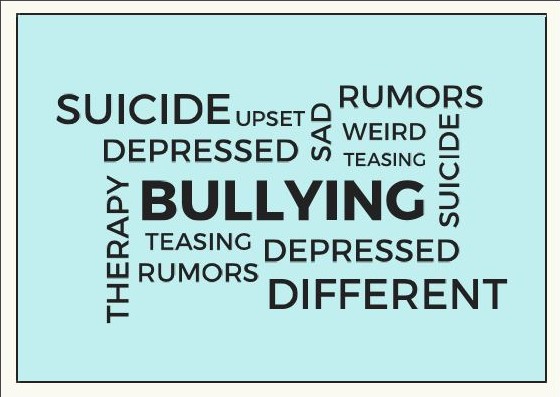Be a friend not a fighter
Identifying the causes and effects of bullying
Students have a choice every day when they go to school to either make someone’s day or ruin it. Encouraging someone to do their best instead of calling them stupid is a good way to start someone’s day with a smile rather than a frown.
Bullying is not only an issue in Freedom, but also across the United States. One in three students in the United States reports that they have been bullied whether it has been physical, social, verbal or cyber.
It’s important to understand what bullying actually is. Bullying is defined as “abuse and mistreatment of someone vulnerable by someone stronger, more powerful,” in the Merriam-Webster dictionary.
However, different people would define bullying in different ways.
“Bullying is any unwanted teasing or joking that is not mutual” is how a student that was bullied would define it.
Bullying can take a toll on children. It can turn something as simple as walking into English class into a living nightmare for a student.
People who are bullied may experience depression, anxiety and changes in eating and sleep patterns, as well as increased feelings of loneliness, sadness, helplessness and more. Bullying may also cause a decrease in academic performance.
Some children who have been bullied may respond through exceedingly dangerous and violent measures. Many students who have been bullied have considered hurting themselves or other students.
People bully their peers for many different reasons. They may feel bad about themselves and think that the only way to make them feel better is to make someone else feel worse about themselves. They also may be abused at home and need to take it out on someone else or they do it to fit in with a certain group of friends. Whatever the reason, it is a problem.
“I was looked down upon and laughed at. The few friends I had started to turn on me. I think I was treated like that because of my looks, impressions I gave people, the clothes I’ve worn and I was weird in some ways to certain people. I was just different than them,” a student from Freedom who has been bullied said.
There are many ways to address bullying. At Freedom, students participate in Rachel’s Challenge. This is a program that, when fully implemented, will statistically increase community engagement, leadership potential, faculty and student relationships and school climate, along with reductions in bullying, alcohol, tobacco and other drug use.
There are also counselors available for students to talk to during all school hours.
160,000 students skip school every day because they fear that they will get bullied. This number is way too high.
Stopbullying.gov suggests some other measures that can be taken to reduce bullying within schools. Bullying presentations or assemblies, class meetings to talk about peer relations and creating writing about bullying could all be simple ways to reduce bullying. Although many people know what bullying is, it is still important to teach them the harmful effects it could have on them and their peers.
Adding more clubs or activities might be another great way for students to get to know other students who they would not ordinarily see.
The administrators at Freedom are always open to suggestions on how to further prevent bullying and improve the district.
The easiest way to improve the attitude in the school is to encourage someone instead of tearing them down. Be a friend rather than a fighter.



